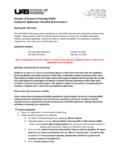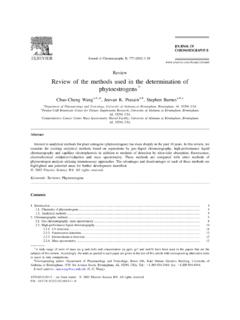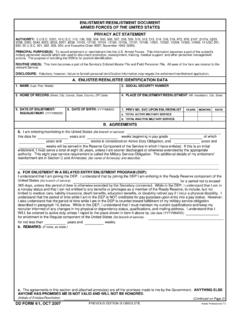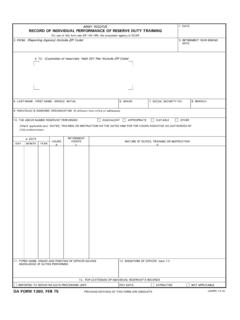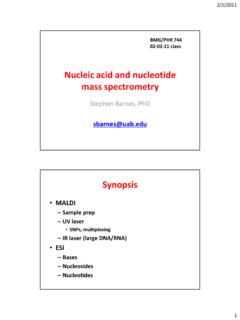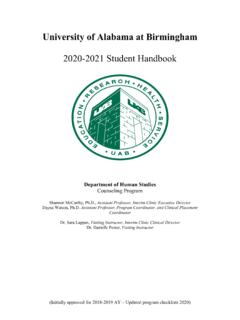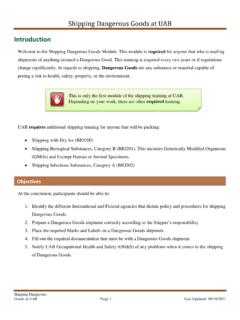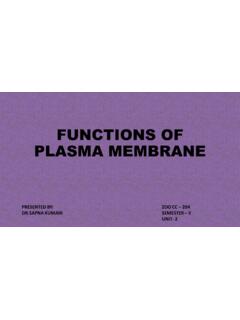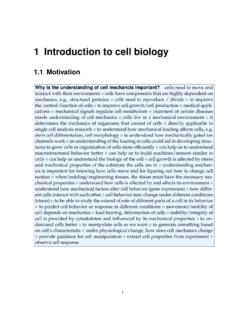Transcription of Basic Overview of Preclinical Toxicology in Drug Development
1 Basic Overview of Preclinical Toxicology in Drug Development LutfiyaMiller, , 8, 2019 Background In Vitro Toxicology In Vivo Toxicology Animal ModelsOutline of PresentationToxicology BackgroundToxicology the study of the adverse effects of: Chemical Physical Biological agents on People Animals Environment Everything we eat, breathe and come in contact with can have a toxicologic effect Everything, including water, can be toxic The dose makes the poison Toxicologystudies the interaction of these compounds and biological systems4/17/19 Southern ResearchToxicology BackgroundSouthern Research DDV|5 Drug Development : Drugs must be approved by the FDA before they can be marketed in the US Long, costly, and inherently risky: only 1 of 10-15,000 reach FDA approval Toxicology testing is required to demonstrate that drugs are safebefore they can be given to humansWhy do Toxicology Testing?
2 The future of Toxicology may be in computer simulations, today we useanimal models to simulate human biologic systems, often over multiple generations We have very strict animal guidelines for the care and use of animals We use animal models which are closely related to human physiology for the endpoint of interest It s crucial to use the right animal model for the right test. An error, like the one used to study thalidomide can lead to catastrophic failureIntroduction to Toxicology4/17/19 Southern Research Thalidomide tragedy (1961-1962) One of the greatest of all drug disasters Introduced as safe and effective during pregnancy to treat nausea Potent human teratogen, caused major birth defects in ~10,000 children PhocomeliaHistory of Thalidomide Disaster4/17/19 Southern ResearchImportance of Animal Models!Key Assumptions: Other organisms can serve as accurate predictive models of toxicity in humans.
3 Selection of an appropriate model is critical to accurate prediction of effects in humans. Understanding the strengths and weaknesses of any particular model is essential to understanding the relevance of specific findings to humans. GLPis a Federal Regulation to ensure the integrity of data from nonclinical studies. Definition: GLP embodies a set of priciples that provides a framework within which laboratory studies are planned, performed, monitored, reported and archived In the USA, the GLPs are administered by the FDA, and are laid out in 21 CFR (Code of Federal Regulations) Part 58 Other regulatory agencies (OECD, EPA) have their own sets of GLP regulations that are similar to but not identical to those of the FDA. Definitive Preclinical studies ( , the ones the FDA uses to make the final decisions regarding approval to start testing in humans) MUST be GLP-compliant!
4 Good Laboratory Practices Created in response to the Industrial Bio Test Labs Scandal Early 70 s, FDA became aware of cases of poor laboratory practice all over the US Discovered fraudulent activites Animals would be removed in the data, then later resurrected Animal room called the swamp due to excessive humidity They deemed their products were safe for human useWhy GLP?Why GLPs? In vitro Toxicology The crossover point between drug discovery and drug Development . Provides information on mechanism(s) of action of a drug Provides an early indication of the potentialfor some kinds of toxic effects, allowing a decision to terminate a Development program before spending too much Vitro Toxicology In vitro methods are widely used for: Screening and ranking chemicals Studying cell, tissue, or target specific effects Improve subsequent study design for in vivo studiesIn Vitro Toxicology In vitro methods are usually Less expensive to run than in vivo studies Faster than in vivo studies (PLUS they don t bite!)
5 Somewhat less predictive of toxicity in intact organismsIn Vitro Toxicology Screening, Some Types of In Vitro Toxicology Tests Cytotoxicity Protein binding CYP inhibition/induction membrane permeability Metabolic stability Interspecies comparisonIn Vitro Toxicology Cytotoxicity= toxicity to cells Many different types of cells can be used; cells from higher organisms ( , liver cells , blood cells ); bacteria; fungi; yeast Can be used to assess viability, structural effects, and/or function Structural , effects on membrane integrity Functional , effects on mitochondrial function Cell proliferation decreases or increases In Vitro Toxicology Replace in vivo tests such as Dermal Corrosion, Skin Irritation, DraizeEye Irritancy Many tests now available in kit form Example: EpiDerm Normal humanepidermal keratinocytes Cultured on a permeable polycarbonate membrane Stratified, highly differentiated, model of human epidermis Metabolically and mitoticallyactive cells organized into differentiated layersIn Vitro Toxicology Assess ability of a chemical to induce metabolism of specific substrates, including the chemical itself Information about metabolic pathways by which the chemical can be metabolized Information on production of toxic/reactive metabolites Interspecies comparisons Can provide information on relevance of a particular animal model from a metabolic standpointIn Vitro Toxicology Results from Preclinical Toxicology studies should, at a minimum.
6 Establish a safe starting dose for clinical studies Provide information on a drug-treatment regimen that would produce the least toxicity Assess target organ toxicity and its reversibility Provide insight into biomarkers for clinical monitoringIn Vivo Toxicology Single dose (acute) Toxicology testing Combine with preliminary testing Repeat dose Toxicology testing Pivotal testing Toxicokineticand pharmacokinetic studies Distribution within the body and disposition Safety Pharmacology studies CV, respiratory and CNS Stand alone studies or combine with Toxicology ? Local tolerance testing Genotoxicitytesting (some in vivo, some in vitro)Types of Testing Required The number and types of studies required depend on the therapeutic indication. Drugs for life-threatening illnesses require fewer studies to reach the clinic. In general, animal studies are conducted in two species, one rodent ( , rat, mouse) and one non-rodent ( , dog, nonhuman primate).
7 Biologics may require only one species. Other species ( , rabbits, ferrets, hamsters, mini-pigs) may be used for special studies ( , vaccine studies). Types of Preclinical Safety StudiesUsually start with:Single Dose (Acute/Range-Finding) Used to determine the most appropriate dose range in the species to be tested. Used to get an idea of target organs Includes minimal number of animals and evaluations ( , body weights, clinical signs of toxicity) Usually not required to be GLP-compliantTypes of Preclinical Safety Studies Repeat Dose Toxicity Animal models Small molecules two species (one rodent, one non-rodent) Biologics may require only one species if only one relevant species can be identified Should mimic as closely as possible the planned clinical design Route Duration Schedule Requirements vary between the different regulatory of Preclinical Safety Studies Repeat Dose Toxicity Extensive evaluations of toxic effects Body weights Clinical signs of toxicity Food consumption Clinical pathology Histopathology Other Large animals usually undergo more extensive evaluation ( ,ECGs) At least one dose should produce dose-limiting toxicity.
8 At least one dose should be of Preclinical Safety Studies Safety Pharmacology Used to determine the effects of the drug on specialized organ systems ( , cardiovascular, respiratory, neurologic) Chronic Toxicity/Carcinogenicity Used to determine the effects of long-term exposure to the drug, including the ability to produce cancer. May not be required for drugs that are intended for only short-term use ( , antibiotics) and that are expected to have no permanent effects on DNA. Reproductive Toxicity/Teratogenicity Evaluates effects on reproductive function and ability to produce birth defectsTypes of Preclinical Safety Studies Biologics ( , gene therapy vectors, vaccines, monoclonal antibodies) require someof the same tests as small molecules Typically each biologic has its own set of unique additional requirements Frequently require different animal models than small molecules ( , hamsters for adenovirus gene therapy vectors) BiologicsKey Assumptions Other organisms can serve as accurate predictive models of toxicity in humans.
9 Selection of an appropriate model is key to accurate prediction in humans. Understanding the strengths and weaknesses of any particular model is essential to understanding the relevance of specific findings to Assumptions notwithstanding, remember that drugs showing safety and efficacy in Preclinical animal models mayshow very different pharmacological propertieswhen administered to humansAnimal Models Development of proper Preclinical models which can efficiently predict drug behavior in humans is essential prior to testing a drug in a human subject. The FDA and other regulatory agencies are more and more requiring Sponsors to provide data to support selection of the specific species (and even strains) used to support testing of new ModelsSome (of the many) reasons that a given animal model may be inappropriate are: Lack of appropriate drug target in the Preclinical animal model Presence of irrelevant target Differences in metabolic fate The complement of drug-metabolizing enzymes can vary significantly from one animal species to another, and even between strains of the same species.
10 Significant variability between sexes for some enzymes. Differences in susceptibility to infection by specific pathogens Cotton rats and hamsters for adenovirus vectorsAnimal ModelsExamples: Testing of therapeutic antibodies Relevant species is one in which the antibody is pharmacologically active, the target antigen should be present or expressed and the tissue cross-reactivity profile should be similar to that in humans. Sex-specific drugs Don t test TOXICITY of a drug intended for treatment of prostate cancer in FEMALE rats. No, really! This ModelsLack of Appropriate Drug TargetExample: Unleaded gasoline-induced nephropathy Unleaded gasoline induces a unique type of kidney damage in male rats following inhalation exposure. Accumulation of hyaline droplets containing 2u-globulin in the proximal tubules, leading to cell death and denudation of the lining of specific segments of the proximal tubules Similar syndrome not seen in female rats, or in mice and nonhuman primates of either sex 2u-globulin is a male rat-specific protein.
